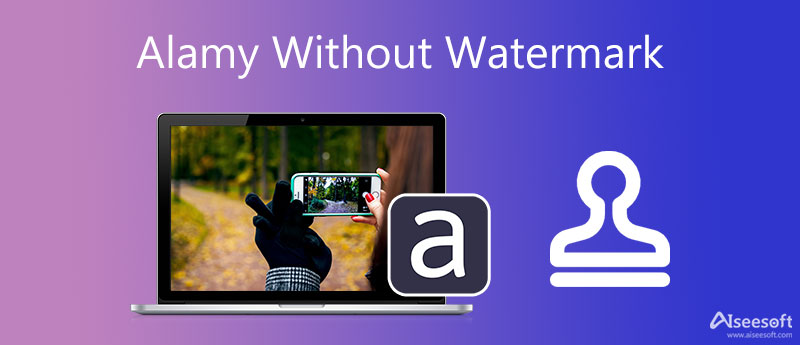Alamy is one of the largest stock photography agencies in the world, offering millions of high-quality images across diverse categories. From stunning landscapes and portraits to conceptual illustrations, Alamy caters to a wide range of customers, including marketers, publishers, and content creators. One of the key features of
What sets Alamy apart from other stock photography sites is its commitment to providing authentic and unique content, often submitted by independent photographers. This variety appeals to users looking for that special image that stands out from the usual stock photography. However, like any other platform that provides copyrighted materials, Alamy has policies governing the usage of its images, which includes the presence of watermarks on the photographs displayed on the website.
The Importance of Watermarks

Watermarks serve several crucial roles in the world of stock photography, particularly on platforms like Alamy. Here’s why they are so important:
- Copyright Protection: Watermarks help protect the intellectual property of photographers. By marking an image with a watermark, photographers can assert their ownership rights and prevent unauthorized usage of their work.
- Brand Recognition: A watermark often includes the logo or name of the stock agency or photographer. This establishes brand identity and promotes recognition, ensuring that anyone who sees the image remembers where it came from.
- Deterrent Against Theft: By displaying a watermark, it becomes more difficult for people to misuse or claim the image as their own. Unsanctioned alterations might still happen, but watermarks discourage outright theft.
- Encouragement to License: When viewers see a watermark on an image, they're reminded that the content is licensed. This encourages them to purchase the rights to use the image legally, supporting the creator financially.
In essence, watermarks play a vital role in maintaining the integrity of creative works, while also ensuring that photographers are compensated for their efforts. Without them, the risk of misuse and loss of revenue would significantly increase, affecting not just the photographers but the industry as a whole.
Also Read This: How to Effectively Use Adobe Stock Images
Understanding Copyright and Licensing

When it comes to downloading images from online sources like Alamy, understanding copyright and licensing is crucial. Copyright law is essentially the reason why you can't just grab any photo off the internet and use it as you please. It's designed to protect the rights of the creators—photographers in this case—for their unique works.
Now, let's break this down a bit:
- Ownership: The moment a photographer clicks the shutter, they own the copyright to that image. This means no one else can use that image without permission, unless it falls under certain exceptions like fair use.
- Licensing: This is where it gets interesting. Photographers can license their work to others. A license is essentially permission—from the creator—to use their photo under specific conditions. Alamy often offers various licensing options, so you're able to pick one that suits your needs.
- Stock Photos: Sites like Alamy have vast libraries of stock photos, and they operate on a licensing model. When you purchase a photo, you're effectively buying the rights to use it, while respecting the original creator's work.
In summary, to use photos legally and ethically from Alamy, or any similar platform, you must understand that copyright protects the creator's rights, and licensing provides the framework for using their images. Ignoring these principles can lead to serious repercussions.
Also Read This: Curving Images: Tips and Tricks
Legal Implications of Downloading Without Permission
Now, let's dive into the important topic of what happens if you download images from Alamy without permission. Spoiler alert: it's not a good idea! Failing to respect copyright and licensing agreements can lead to some pretty tricky legal situations.
Here are a few key implications to consider:
- Copyright Infringement: Downloading or using an image without permission is a violation of copyright law. This can lead to legal action from the creator or the licensing agency.
- Financial Penalties: If found guilty of copyright infringement, you could face hefty fines. These can range from hundreds to thousands of dollars, depending on the severity and the usage of the image.
- Cease and Desist Orders: Creators can send you a formal request to stop using their photo. Ignoring this could escalate the situation further into legal territory.
- Damage to Reputation: Being caught using unauthorized images can hurt your personal or brand reputation. It can undermine trust and professional relationships that you've built.
In conclusion, while it may seem tempting to download images without paying for them, the risks far outweigh the benefits. Always play it safe and invest in proper licenses to avoid legal pitfalls!
Also Read This: How to Buy Getty Images for Book Rights: What You Need to Know About Licensing Getty Images for Publishing
5. Alternatives to Downloading Without Watermarks
If you're looking to find high-quality images without the hassle of watermarks, there are several legitimate alternatives you can explore. Instead of searching for ways to bypass photo watermarks, consider these options:
- Stock Photography Websites: There are numerous stock photography platforms like Shutterstock, Adobe Stock, and Getty Images where you can purchase high-quality images. These platforms often have extensive libraries and various licensing options.
- Creative Commons Images: Websites like Unsplash, Pexels, and Pixabay offer images that you can use for free, typically under Creative Commons licenses. Always check the specific license associated with each image to ensure you're complying with its terms.
- Freelance Photographers: Consider reaching out directly to photographers. Many are open to negotiation and may provide you with images at a lower price or even for free in exchange for credit or exposure.
- Public Domain Archives: Resources like Wikimedia Commons and the New York Public Library Digital Collections feature images that are in the public domain, meaning you can use them freely without legal concerns.
- Subscription Services: Some services offer monthly or yearly subscriptions that allow you to download a certain number of images. This can be cost-effective for businesses or creators who need regular access to photos.
By utilizing these alternatives, you can access stunning images legally and ethically, while also supporting creators and the photography community.
6. Conclusion
In conclusion, it’s crucial to understand that downloading Alamy photos or any stock images without permission or bypassing watermarks is not only illegal but also unethical. Engaging in such practices can have serious consequences, including potential legal action from copyright holders.
Instead, embracing the countless legal avenues available for obtaining images can save you the worry and risk associated with copyright infringement. Whether you choose to invest in stock photos, explore free repositories, or even hire a photographer, there are numerous options tailored to different budgets and needs. Remember:
- Investing in quality images adds professionalism to your work.
- Supporting photographers and artists fosters creativity and innovation.
- Using legally obtained images ensures peace of mind and compliance with copyright laws.
So, as tempting as it might be to look for shortcuts, always opt for ethical practices. After all, the respect you show for creative work reflects your own integrity as a creator.
 admin
admin








